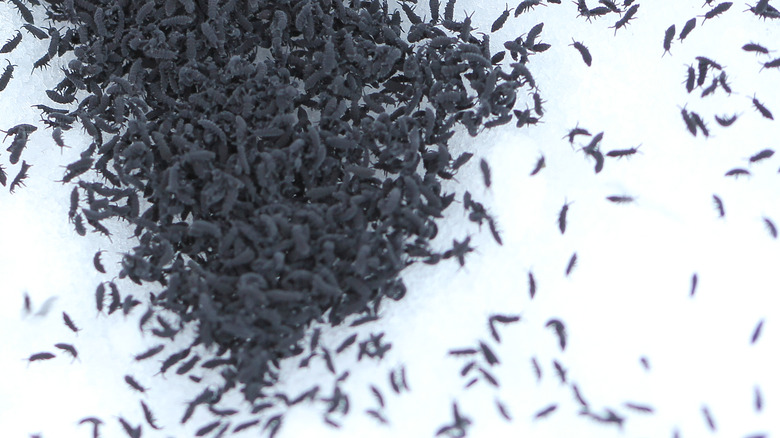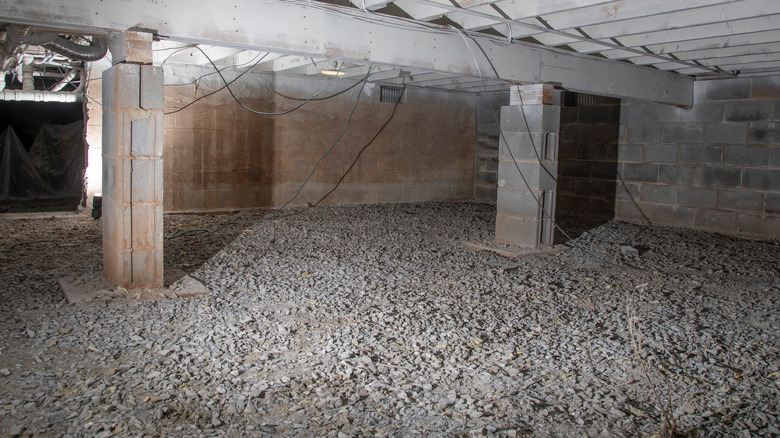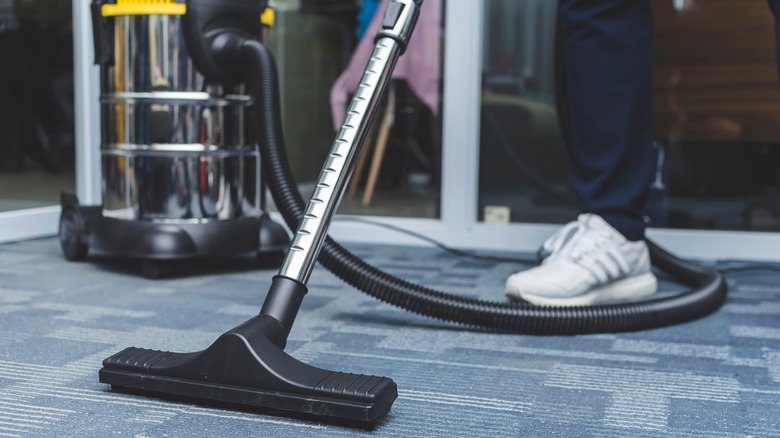Places Where Snow Fleas Are Hiding In Your Home
Finding snow fleas in your home can be disturbing, but they aren't the worst insect to discover has taken up shelter in your space. Still, no one wants to invite insects to share their surroundings. When snow fleas inhabit a home, there are a few key places where they like to hide, centering on areas where there is moisture.
The first thing to keep in mind is that snow fleas are not actual fleas. Instead, they are small, dark-colored insects that are often seen jumping on snow in the winter. They are a type of springtail that lives in soil. Snow fleas are less than two millimeters long and have no wings. Yet, like fleas, they can jump multiple inches at once.
It's also worth noting that snow fleas are harmless to people and pets. They do not bite or sting, and they do not carry any diseases. However, they can be a big inconvenience if they get into your house. Not only is it alarming to find a mound of jumping insects but they can leave behind excrement.
Where snow fleas hide in the house
Snow fleas are attracted to organic matter that is in a state of decay, such as dead leaves, mold, and mildew. Snow fleas help to decompose this material and recycle nutrients back into the environment. They are attracted to moist, damp areas, both indoors and outdoors.
As a result, they are often found in kitchens and leaky pipes or drains. Basements are often damp and cool, which makes them an ideal habitat for snow fleas as well. Since bathrooms are also often damp and humid, they can attract snow fleas, too.
Additionally, snow fleas can be found under porches and decks, particularly if there is moisture from rain or humidity present. They can also congregate near building foundations, and snow fleas gravitate toward moisture found in houseplants. This is especially true in plants that are overwatered, so be mindful of your watering habits.
Getting rid of snow fleas
The most important step in getting rid of snow fleas is to eliminate moisture in your home. This means regularly checking under the kitchen and bathroom sinks and fixing any leaky pipes. Remove any decaying organic matter, such as mold and mildew, from your home as well.
In damp areas, like basements, use a dehumidifier, and sanitize showers and tubs where mold is likely to grow. In addition, clean up any spills promptly, and remove any dead plants or leaves.
Once you notice snow fleas, you can use a vacuum cleaner with a hose attachment to suck them up. Be sure to dispose of the vacuum bag or canister immediately after vacuuming. To prevent snow fleas from entering your home, investigate the area outside your home and repair any cracks or holes in your foundation. Be sure to seal up any holes in walls as well. You should also keep your basement and crawl space dry and well-ventilated.


